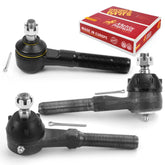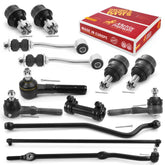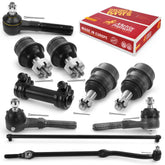How to Replace a Brake Rotor
It is possible for a person with the necessary tools, mechanical skills, and knowledge to replace their vehicle's brake rotors themselves. Replacing brake rotors is considered a moderate-level DIY automotive task, but it should be approached with caution and a good understanding of the process. Here are the general steps involved in replacing brake rotors:
Steps to Replace Brake Rotors:
- Safety First: Ensure the vehicle is parked on a level surface, and the parking brake is engaged. Wear appropriate safety gear, including gloves and safety glasses.
- Raise the Vehicle: Use the jack to lift the vehicle and secure it with jack stands for safety.
- Remove the Wheel: Use a lug wrench or impact wrench to remove the wheel covering the brake rotor you want to replace.
- Remove the Brake Caliper: Locate the brake caliper, which is usually held in place by bolts or slider pins. Remove the caliper by loosening and removing these fasteners. Hang the caliper with a wire or bungee cord to prevent it from hanging by the brake line.
- Remove the Brake Pads: Take out the brake pads from the caliper bracket. You may need to use a C-clamp or brake caliper tool to compress the caliper piston to make space for the new, thicker brake pads.
- Remove the Brake Rotor: The rotor is typically held in place by a few bolts or screws. Remove these fasteners to take off the old rotor.
- Install the New Brake Rotor: Clean the hub surface where the rotor mounts and place the new rotor in position. Secure it with the bolts or screws. Ensure the rotor is properly centered.
- Reinstall Brake Pads and Caliper: Place the new brake pads into the caliper bracket and reattach the caliper over the rotor. Tighten the caliper bolts or slider pins to the manufacturer's specifications.
- Bleed the Brakes (Optional): If you disconnected the brake line during caliper removal, you may need to bleed the brake system to remove air bubbles.
- Repeat for Other Wheels: If you are replacing multiple rotors, repeat the above steps for each wheel.
- Torque Wheel Bolts: Ensure the wheel bolts are properly torqued to the manufacturer's specifications.
- Test the Brakes: Before driving, gently press the brake pedal to ensure it feels firm. Pump the brake pedal a few times to seat the brake pads against the rotor.
As a car owner, you know the importance of maintaining your vehicle's braking system. Replacing the brake rotors is an essential part of this maintenance process. While some may attempt to take on this task themselves, it can be a complex and potentially dangerous job if not done correctly. That's why it's crucial to seek professional assistance from a qualified mechanic if you're not confident or don't have the necessary tools and knowledge.
It's crucial to prioritize quality and reliability when it comes to selecting brake rotors. Your braking system's performance, durability, and safety all depend on the quality of its components. To ensure optimal braking performance, we recommend choosing only reputable and well-known brands. That's why we highly recommend our premium brake rotors, Metrix Premium Chassis Parts brake rotors are made with the highest quality materials, which have passed performance and safety tests to guarantee that they meet the highest industry standards.
If you're unsure about which brake rotors are best for your vehicle, seek advice from a knowledgeable mechanic. They can provide recommendations based on your vehicle's specifications and your specific driving needs.









